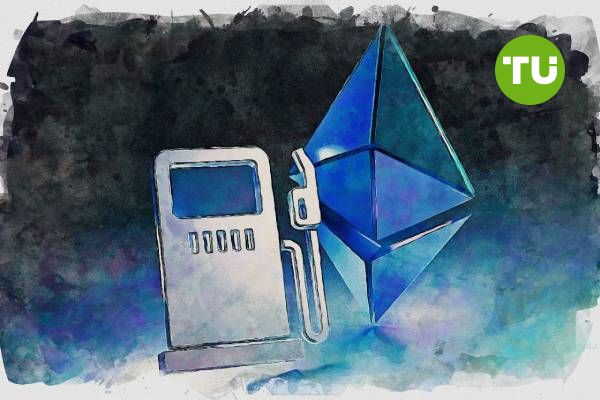Gas attack: How to avoid overpaying fees on Ethereum blockchain
 How fees work, why they rise, and what EIP-4844 will change for users in 2025
How fees work, why they rise, and what EIP-4844 will change for users in 2025
Recently, Vitalik Buterin announced that Ethereum is set to scale significantly — by as much as 10x during 2025. A key role in this process belongs to the EIP-4844 upgrade, which is expected to reduce network load and, along with it, gas fees.
Lower gas fees have been promised before. Yet in practice, we’re still paying for “gas” — and often without a clear understanding of what exactly we’re paying for. So let’s break down how fees in the Ethereum blockchain really work.
What is gas in the Ethereum blockchain?
Think of Ethereum as a vast, decentralized network of computers. Every time you want to send ETH, buy an NFT, or interact with a smart contract, your action needs to be verified. This verification is handled by validators, who are rewarded for their work.
To motivate validators, Ethereum uses a mechanism called gas — essentially, a way to pay for computation. It’s not a fee in the usual sense, but rather a charge for consuming network resources. The more complex or urgent the transaction, the more gas it requires.
Gas is measured in gwei, which is one-billionth of an ETH (1 ETH = 1,000,000,000 gwei). So when you see a fee of 30 gwei in your wallet, it represents a tiny fraction of ETH — but this amount can rise quickly when the network is busy.
How gas fees are calculated
Gas prices on Ethereum aren’t random. They depend on a few key factors: supply, demand, and how congested the network is at the moment you send your transaction. When network activity is high — like during an NFT drop or a token launch — fees go up. During quieter periods, they can drop significantly.

To understand how the final gas cost is formed, let’s look at its core components:
- Gas limit — this is the estimated amount of computational work the network needs to process your transaction. For example, a simple ETH transfer typically requires around 21,000 units of gas.
- Gas price — the amount of gwei you’re willing to pay per unit of gas. This acts as a signal to the network: the higher your offer, the faster your transaction is likely to be confirmed.
- Base fee — introduced in August 2021 with EIP-1559, the base fee is automatically set by the network depending on current demand. It’s burned (destroyed) and not paid to validators.
- Priority fee — also known as a tip, this is an extra amount you offer to incentivize validators to pick your transaction over others.
The formula is simple:
Gas fee = Gas used × (Base fee + Priority fee)
Let’s say you’re sending a transaction that requires 21,000 units of gas. If the current base fee is 12 gwei, and you add a 4 gwei priority tip, the total cost would be:
21,000 × (12 + 4) = 336,000 gwei, which equals 0.000336 ETH — an amount that’s added on top of your transaction.
Here’s how it works in practice: you initiate a transaction through your wallet or exchange, receive an estimated fee (which you can usually adjust), and submit it to the network. Validators prioritize transactions that include higher tips — those get picked up and confirmed first.
Once confirmed, the gas fee is deducted from your wallet. The base fee is burned, reducing the overall ETH supply, while the priority fee goes to the validator who processed your transaction.You can check current gas prices using tools like Etherscan Gas Tracker or browser extensions that track network activity in real time.
How to avoid overpaying for gas
Ethereum is one of the most active and congested networks out there. When a new trend hits — whether it’s an NFT drop, a viral token, or a major DeFi launch — thousands of users rush to transact at the same time. The network gets overwhelmed, and people start bidding higher fees just to get their transactions confirmed.
As a result, the base fee increases, and with it — the need to offer generous priority tips. What might have cost you $2 yesterday could easily jump to $50 today — even for a basic action.But there are a few effective ways to save on gas:
- Watch network activity. Fees tend to be lowest during off-peak hours — early morning UTC or weekends.
- Use Layer 2 solutions. Networks like Arbitrum, Optimism, or Base offer much lower fees for the same actions.
- Adjust fees manually. Most wallets let you choose between “low,” “standard,” and “priority” options. If your transaction isn’t time-sensitive, choose the low-cost one.
What EIP-4844 will change
The upgrade Buterin mentioned introduces a new data format — blobs — specifically for Layer 2 transactions. These blobs will reduce the data load on Ethereum’s mainnet, which in turn should lead to faster and cheaper transactions across the board.
Loading...
In practice, this means that by 2025, Ethereum users may finally stop worrying about outrageous gas fees. But the fundamentals won’t disappear: base fees, gas limits, and priority tips will still be part of the equation.
Gas fees aren’t just a technical footnote — they’re central to how Ethereum works. They determine how fast your transaction goes through, how much you pay, and whether it’s confirmed at all.
So while we wait for big changes, it pays — literally — to understand how gas fees work today. Because in the world of Ethereum, knowledge really does save money.













































































































































